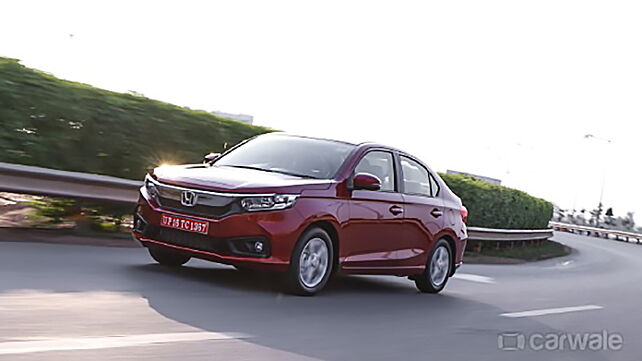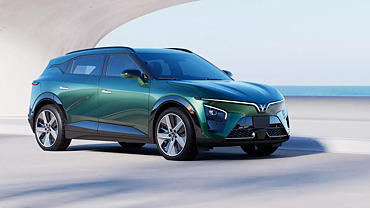
- The Honda Amaze will usher in its second generation car after a surprise premiere at the 2018 Auto Expo.
- The compact sedan will come in four variants - E, S, V and VX.
- It debuts a diesel CVT for the first time in the segment.
Honda is all set to launch the all-new Amaze compact sedan in the country. The compact sedan was first showcased at the 2018 Auto Expo and will be launched in India tomorrow. We have driven the car and you can read all about it over here.
The Japanese carmaker will launch the new-gen Amaze in four variants namely E, S, V and VX. The Amaze will debut a diesel CVT option for the first time in its segment. Built on a new platform, the new Amaze has adopted an upmarket styling, thereby moving away from its Brio roots. The City and the Civic connection is evident in the new rectangular headlamps and the thick chrome slat across the fascia. The prominent angular lines make it look bigger as well. Even at the back, the new tail light styling is in line with the new European design language.
On the inside, the City inspiration extends to the beige and black dashboard. The Amaze is known for its spacious cabin and that certainly continues with the new platform as well. It will also make sure that the ride and handling characteristics are improved along with the NVH insulation. Honda will offer climate control as standard on the top-spec trims along with a touchscreen display and rear AC vents.
The Amaze will have dual airbags, ABS, EBD and brake assist, ISOFIX and reverse parking sensors as a standard fitment. It will be powered by the same 1.2-litre petrol engine which produces 89bhp/110Nm and the 1.5-litre four-pot diesel putting out 99bhp/200Nm. The five-speed manual gearbox will be standard. However, the CVT which is mated to the 1.5-litre diesel has a power output of 79bhp and 160Nm.
When launched in India, the Amaze will continue to go up against the likes of Maruti Suzuki Dzire, Ford Aspire, Hyundai Xcent, and Volkswagen Ameo. Prices are expected to be slightly higher than the outgoing model.

![Honda Amaze [2018-2021] Image Honda Amaze [2018-2021] Image](https://imgd.aeplcdn.com/272x153/n/cw/ec/33276/amaze-exterior-right-front-three-quarter-2.jpeg?q=80)















![Honda Amaze [2018-2021] Right Front Three Quarter Honda Amaze [2018-2021] Right Front Three Quarter](https://imgd.aeplcdn.com/199x112/n/cw/ec/33276/amaze-exterior-right-front-three-quarter-2.jpeg?q=80)
![Honda Amaze [2018-2021] Right Front Three Quarter Honda Amaze [2018-2021] Right Front Three Quarter](https://imgd.aeplcdn.com/199x112/n/cw/ec/33276/amaze-exterior-right-front-three-quarter.jpeg?q=80)
![Honda Amaze [2018-2021] Right Side View Honda Amaze [2018-2021] Right Side View](https://imgd.aeplcdn.com/199x112/n/cw/ec/33276/amaze-exterior-right-side-view.jpeg?q=80)
![Honda Amaze [2018-2021] Dashboard Honda Amaze [2018-2021] Dashboard](https://imgd.aeplcdn.com/199x112/n/cw/ec/33276/amaze-interior-dashboard.jpeg?q=80)
![Honda Amaze [2018-2021] Steering Wheel Honda Amaze [2018-2021] Steering Wheel](https://imgd.aeplcdn.com/468x263/n/cw/ec/33276/amaze-interior-steering-wheel.jpeg?q=80)























